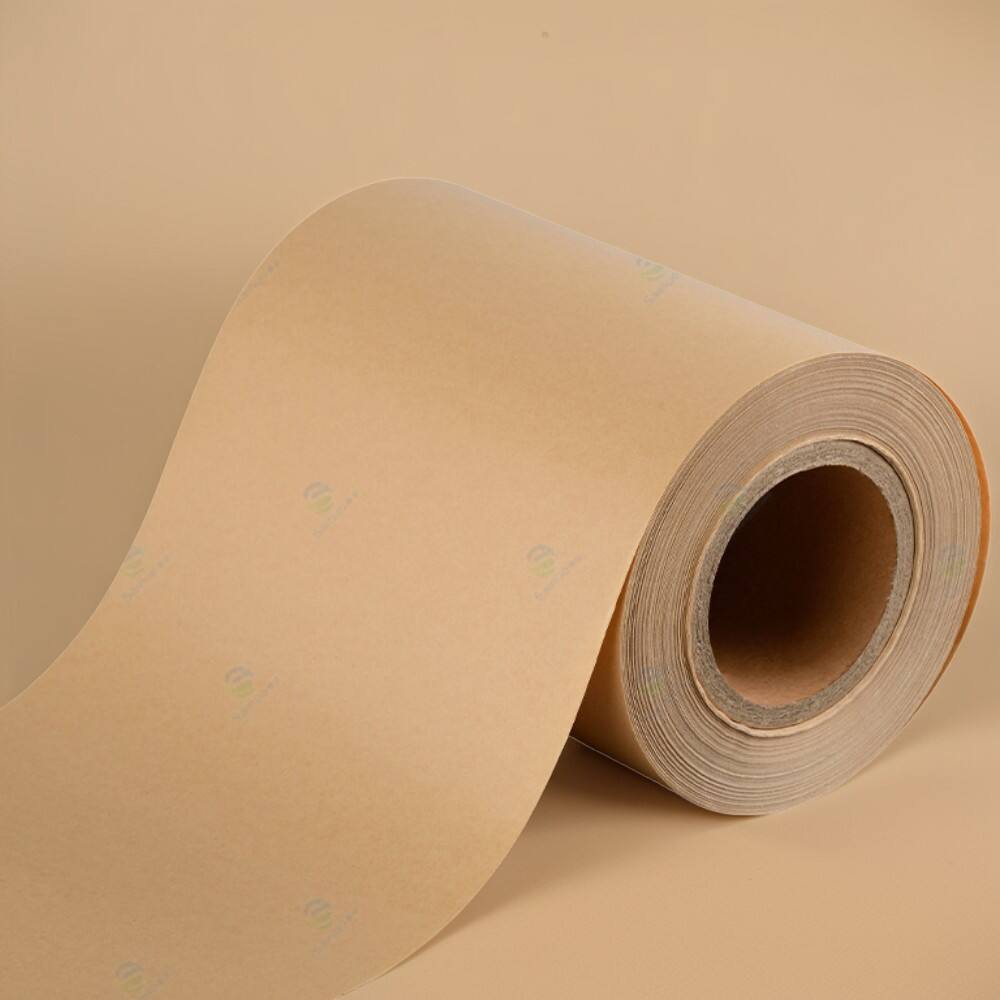Optimizing Label Production with High-Performance Self-Adhesive Materials
Essential Properties of High-Performance Label Materials
Durability in Extreme Conditions
Good quality label materials need to hold up against pretty tough stuff if they're going to last in real world conditions. We're talking about everything from blistering heat to freezing cold, constant moisture, and harmful UV rays without falling apart or losing color. Take the food and drink sector for instance where labels get washed, bumped around, and exposed to all sorts of contaminants. Pharma companies face similar challenges while keeping track of medications through complex supply networks. Research indicates these premium labels can actually survive temperature swings between minus 40 and plus 120 degrees Celsius which matters a lot when products move across different climates during shipping and storage. Most manufacturers opt for specialized papers designed specifically for harsh environments these days. Thermal transfer sheets and synthetic substrates have become standard choices because they just don't break down under pressure like regular paper would.
Print Compatibility with Modern Technologies
Compatibility with different printing tech matters a lot when talking about high performance label materials. We're looking at things like digital printers and thermal transfer systems here. Materials that work well with these setups tend to produce better prints and speed up manufacturing operations. Think about warehouses and distribution centers where labels need to be printed fast and accurately day after day. When picking out label stock, companies really need to pay attention to what kind of ink they're using along with their specific printer specs. Getting this right makes all the difference between good results and frustrating waste. For those running state of the art printing equipment, using the right sticker paper alongside proper thermal sheets isn't just important it's absolutely essential for getting consistently great print jobs done efficiently.
Environmental Resistance for Longevity
When designing label materials, they need to stand up against all sorts of environmental challenges like chemicals, water damage, and physical wear so they last longer. For labels that get put into transport systems or placed outdoors, this kind of protection matters a lot since they face tough conditions that can cause them to break down over time. Polyester and vinyl stand out because they handle these problems really well, which makes them go-to choices when durability and long service life are important factors. The ability to withstand these conditions keeps information on labels readable during actual usage and gives confidence that they'll work reliably no matter what situation they find themselves in during operation.
Optimizing Production with Specialized Self-Adhesive Papers
Sticker Paper Solutions for Diverse Applications
Sticker paper comes in all sorts of varieties that work great for everything from simple price tags to fancy brand logos on products. The different kinds stick well to just about any surface but still come off clean when needed, no sticky mess left behind. Good quality adhesive matters because it keeps those stickers looking sharp on whatever they're applied to while holding firmly in place. Businesses love being able to get custom shapes and sizes too, which lets them really stand out with creative branding across their packaging or displays. That flexibility explains why so many stores and marketers rely on sticker paper these days, especially since customers notice both how things look and how well they function together.
Thermal Paper for Dynamic Labeling Needs
Thermal paper plays a vital role in situations where fast printing is needed right there at the point of action, think retail stores or event ticket counters. What makes this stuff special? Well, it creates crisp, clear prints almost instantly which matters a lot when things get hectic during rush hours. Another plus is how fast it dries compared to regular paper stock, so those price tags and boarding passes don't smear or run after being touched. Want to get the most out of thermal paper? Take some time to look at what kind of printer specs we're dealing with here. Different machines work better with different papers, so knowing these details helps pick the right match for whatever printing job comes along. Getting this pairing right means fewer print failures and smoother operations overall.
Shipping Label Paper Durability Standards
Getting the right shipping label paper matters a lot if we want to cut down on returns from damaged or hard to read labels while packages are in transit. Good quality paper needs to stand up to pretty rough treatment it faces on the road. We're talking about stuff that can handle moisture without smearing, won't tear when handled roughly, and stays readable even after sitting in direct sunlight for days. Labels that stay intact make sure packages actually reach their destination without getting lost in the system. Also important is making sure the labels meet all those shipping rules carriers require these days. Otherwise there could be problems at customs checkpoints or sorting facilities. Spending money on decent label paper pays off in the long run because it keeps logistics running smoothly without unexpected delays or extra costs down the line.
Wholesale Self-Adhesive Brown Kraft Paper Solutions
Thickness Specifications: Ordinary vs. Thickened
When picking out kraft paper for different purposes, knowing what separates regular from thickened varieties makes all the difference. Regular kraft paper usually measures around 70 to 100 microns thick and works great for lighter tasks such as book labels or product tags. It strikes a good middle ground without being too noticeable or falling apart easily. For heavier duty needs though, we turn to thickened kraft paper which ranges between 120 and 200 microns. This extra thickness gives it much better strength, so it sticks well even when exposed to harsh conditions. That's why many manufacturers choose this type for things like outdoor gear packaging or shipping containers where reliability matters most.
Use Cases: From Logistics to Outdoor Equipment
Kraft paper labels work great across all sorts of applications from tracking packages to marking gear for outdoor adventures. Green minded companies love these labels because they break down naturally when discarded, which is why so many sustainable brands make them part of their packaging strategy. Take shipping labels for example most businesses switch to kraft paper since regular labels tend to fall off or get smudged during transit. We've seen this material thrive in everything from food packaging to hardware stores where durability matters just as much as environmental impact does. The fact that kraft paper holds up against rain, dirt, and rough handling makes it a smart choice for anyone trying to cut waste without compromising on quality or functionality.
Sustainability Aspects of Kraft Paper Labels
Kraft paper stands out as one of those truly green materials because it comes straight from trees we can regrow, which fits right into all the worldwide efforts to go greener these days. When we look at how it compares to plastic and other synthetics, manufacturing kraft paper just doesn't hurt the planet as much. The process creates far fewer greenhouse gases during production, so many companies switch to it when they want to cut down on carbon emissions without sacrificing quality. What really matters though are those FSC labels that show the wood came from responsibly managed forests where new trees get planted after harvesting old ones. Businesses that put kraft paper labels on their products do more than just look good environmentally speaking. Customers notice these changes and tend to trust brands that walk the talk on sustainability issues, even if some folks still question whether every eco claim is genuine.
Sustainable Innovations in Label Production
Eco-Friendly Material Alternatives
More people wanting labels made from environmentally friendly stuff has pushed manufacturers to develop new options such as paper derived from hemp or bamboo along with materials made from recycled content. These newer materials help cut down on the overall carbon footprint when making labels. Research shows changing over from regular materials to sustainable alternatives can really bring down greenhouse gas emissions. Big names in the labeling business have started incorporating greener methods simply because customers now expect it. When companies go for eco-friendly materials, they do manage to lower their environmental toll while at the same time building up their reputation as brands that care about going green. Some even market themselves as pioneers in this space despite facing higher costs upfront.
Compostable and Wash-Off Adhesives
New developments in adhesive tech are making it possible to create eco-friendly options such as compostable glues and those that simply wash away. When labels stick to packages but come off easily without leaving behind sticky messes, this makes recycling much simpler for everyone involved. Market surveys from last year showed that over 60% of shoppers now look specifically for packaging that supports recycling efforts. Brands switching to these newer adhesive alternatives see their recycling success rates jump by around 30% in many cases. As more businesses adopt these greener options, we're seeing real progress toward sustainability while still meeting what customers want from their product packaging.
Recycling Compatibility for Circular Economies
Thinking about how labels will be recycled at the end of their life matters a lot when it comes to making progress on circular economy goals. When manufacturers pick materials for labels that work well with today's recycling systems, they're actually moving closer to real sustainability. Getting regular people to understand what goes into proper recycling makes all this even better. We've seen some cool stuff lately like labels without adhesives that just fall off during recycling processes, which means more stuff gets properly recycled instead of ending up in landfills. Companies that care about whether their products can be recycled aren't just being green for show they're helping push our whole system toward something much more circular than what we've had before.

 EN
EN
 AR
AR
 BG
BG
 HR
HR
 CS
CS
 DA
DA
 NL
NL
 FI
FI
 FR
FR
 DE
DE
 EL
EL
 HI
HI
 IT
IT
 JA
JA
 KO
KO
 NO
NO
 PL
PL
 PT
PT
 RO
RO
 RU
RU
 ES
ES
 SV
SV
 CA
CA
 ID
ID
 SR
SR
 SK
SK
 SL
SL
 SQ
SQ
 GL
GL
 HU
HU
 TH
TH
 TR
TR
 FA
FA
 MS
MS
 GA
GA
 MK
MK
 UR
UR
 BN
BN
 LA
LA







